St Leonards, spa town
Report by Sarah Janes August 2010.
Sometimes I find myself wondering, in a wholly conspiracy theorist sort of way, whether someone might just have it in for St. Leonards and Hastings. There seems to be little in the way of explanation as to why somewhere with such a multitude of seemingly advantageous characteristics doesn’t fare better in the scheme of things. We find ourselves in a perfect location on the south coast, we are only about an hour away from the throbbing metropolis of London, we have notably beautiful architecture, are surrounded by glorious unspoilt countryside, a culturally rich and significant history and a working fishing quarter, and yet our streets are covered in dogs’ mess and walking through Hastings Town Centre of an evening is often not entirely dissimilar to a real-life foray into Day of the Dead.
One thing we also have, which I am extremely keen to see inform future development plans, is a great history of public bathing and spa-ing. You might be surprised to learn that a number of beautiful Victorian swimming pools and former Turkish baths are at this moment languishing under wooden floors.
I think that the culture of public bathing and taking the waters is due for a comeback and would make a very sensible part of a grand development scheme. We have a multitude of natural springs. Visitors to Tunbridge Wells appreciate the pomp and circumstance afforded to the springs there, which are doled out for a fee in authentic Victorian drinking vessels by a costumed ‘dipper’ in the summertime. No such ceremony surrounds our own springs, which deliver chalybeate (pronounced ka-lee-bee-at) water of the same quality.
In fact in Alexandra Park, where the springs surface, a plaque identifying the spring is thoroughly discouraging, describing the water as ‘foul-tasting’. Not too long ago, ‘Dr. McCabe’s Chalybeate Well’ was on the map as a popular tourist destination. We have already lost so much of our cultural heritage; so many beautiful buildings have been knocked down to be replaced by ugly housing developments, but I ask you, how can we expect our town to flourish if we have no attractive amenities? This business of building loads of office space and residential developments doesn’t make any sense to me if nothing is invested in making St Leonards and Hastings a really wonderful place to live.
The benefits of public bathing are manifold. In countries where public bathing is part of the lifestyle, more children grow up to be confident and comfortable with their own bodies, which could have a significant impact on social problems such as teenage drinking/drug abuse and pregnancy. Swimming is obviously a healthful activity, and using sauna and steam rooms cultivates an ability to relax and is good for the skin and respiratory system.
There is also evidence to suggest that these controlled means of raising the body’s temperature (similar of course to the body’s natural disease-fighting mechanism – a fever) stimulate the immune system and increase production of disease-fighting white blood cells, anti-bodies and interferon (an anti-viral protein with cancer-fighting properties). All these benefits would, I’m sure, be deeply felt by a community such as ours, if a first-class, open-to-all, public bathing facility were available in St. Leonards and Hastings. Not only that, but it would be a completely unique attraction for those coming from out of town. Imagine a beautiful Victorian Turkish bath, at the seaside!
White Rock Baths
The obvious property for this idea is of course the White Rock Baths (picture), which were built exactly for this purpose in 1878. The initial plans for the complex were extremely ambitious and included an aquarium, which later fell by the wayside. The completed bath house was a triumph of engineering but extremely costly to run and only continued to do so in its original form until 1911. Mr. Malcolm Shifrin has put together a fascinating website (www.victorianturkishbath.org) which takes a look at all the Victorian Turkish baths in Hastings and St. Leonards, and I am in the process of trying to get him to Bohemia to give an illustrated talk on the subject. He has, over the course of his research, collected a plethora of interesting photos, drawings and information which I for one am very keen to see.
Especially take a look at the page which lists the Victorian Turkish baths which are still in operation in the U.K. to give you some idea of what we could be enjoying here in St Leonards and Hastings – if the council were to acquire a bit of vision. This is clearly a very ambitious project, but very sensible and self-sustaining, and to my mind, would work all year through. I can think of nothing nicer come winter time than a sauna overlooking the sea, and it could give a clear-cut definition to what St. Leonards and Hastings aspires to be. Perhaps the gentle climate of other spa towns such as Buxton, Bath and Tunbridge Wells are a bit too tidy for us to attempt to replicate, but certainly, to have bona fide spa credentials in mind would enlighten and shape other developments town-wide.
Turkish Baths
There is another property which begs further study and that is the old Turkish Bath on West Hill Road, St. Leonards (picture). This is currently on the market and lying empty, but I believe it has the potential to be the starting point for the grand scheme. It is ideally situated in Burton St. Leonards, very close to the lovely St. Leonards Gardens and occupying that part of town where one can inhabit what I like to think of as the ‘Burton Bubble’ – in the way that when you walk around that area you can more or less forget that London Road exists.
The spa at West Hill Road was originally managed by Emil Grosslob, whom I have done quite a bit of research on. He had owned a Russian bath also on West Hill Road which burnt down. Following this calamity, a company was set up as it was felt that the residents of the area could not survive without a replacement. Mr. Grosslob’s prices were rather high, and the business went into liquidation in 1879. Mr. Grosslob – according to an advert in the Hastings and St Leonards Advertiser of the time – took over a property at London Road and continued to offer “rubbing and shampooing” services to people at their own homes.
The property was then sold to the Upland Girls’ School and they built a beautiful large tiled swimming pool at the rear. This swimming pool is still there, but is covered over with a wooden floor – the property subsequently being used as a glass milling factory for laboratory equipment by the current owners, whose family it has been in for the last fifty years. It now stands empty, the glass-milling business having moved up to Ivyhouse Lane Industrial Estate. Planning permission has been sought and granted and there is the possibility that this wonderful purpose-built Turkish Bath could end up being a desirable family residence. No doubt marvelous for that lucky family, but they will be walking over a redundant Victorian swimming pool (the property’s ‘Listed’ status precludes removal of that particular feature) every day, which seems like something of a waste to me.
Interested in the Turkish Bath at West Hill Road? – call owner Graham Jones on (01424) 773929.
Turkish Baths Update by Sarah Janes Dec 2010
I had a tremendous response to my article in the last issue of the Bohemia Village Voice about the Turkish Bath on West Hill Road. Graham Jones, the owner, has told the Bohemia Village Voice that there have been some interesting developments regarding the building’s future. A consortium has been formed with the intention of buying the property and opening it up to the public – the finer details of the plans are still a mystery, but it seems that this fascinating building will hopefully be sensitively preserved for the people of our town, which is wonderful news.
Also the Bohemia Village Voice, in collaboration with Catherine Walling, curator at the Hastings Museum & Art Gallery on Bohemia Road, have arranged with Malcolm Shifrin, author of www.victorianturkishbath.org to give a talk at the Museum in July. An authority on Victorian bathing culture, Malcolm has a wealth of knowledge on the bathing establishments in Hastings & St. Leonards and this promises to be an illuminating talk on an important aspect of our history. Please look out for more details closer to the time.
COMMENTS:
By Richard Harrison, Dec 2011
Dear Sir – with reference to your item on ‘St Leonards Spa Town’, this was quite a significant picture [right] for me – as it is where I was married! When St Leonards Parish Church was destroyed by a V1 flying bomb on July 29th 1944, the congregation had to find somewhere to meet, and the following day a service was held in the ballroom of Marine Court. A collection was taken to start a re-building fund. The amount given was £7.8s.9d !! From there to the church primary school in Mercatoria and from there to the building in West Hill Road, which was converted into our ‘emergency church’. My wife and I were married there on Sat 25 July 1954. Finally from there to the newly-built church on the Marina in St Leonards. .
Richard Harrison, St Leonards.

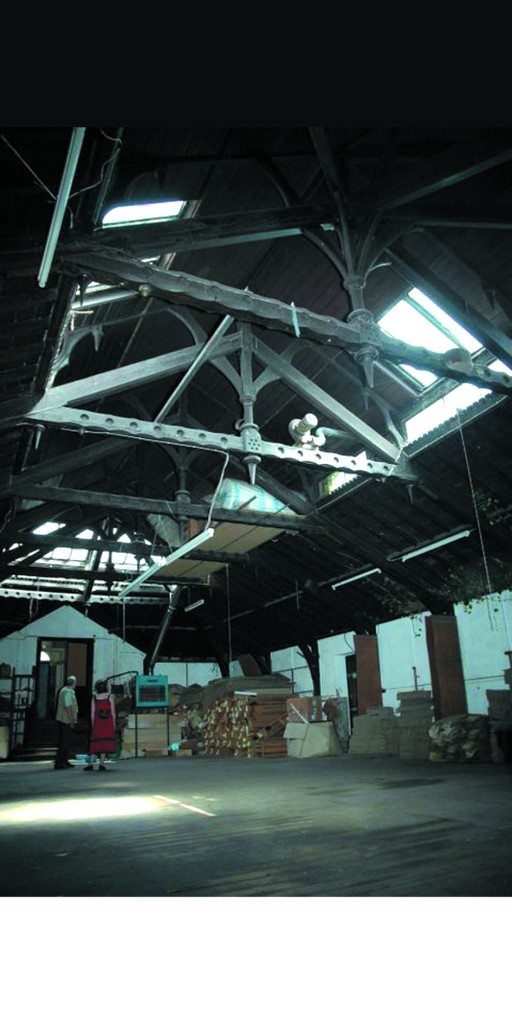
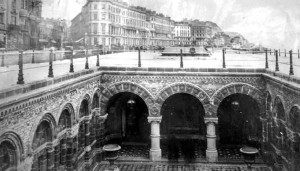
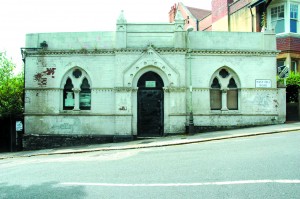
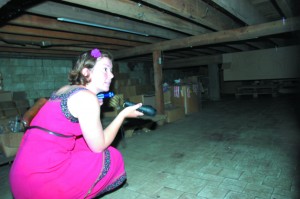
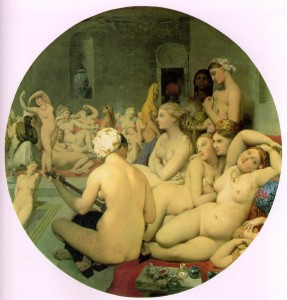
Hi just been doing a bit of research on old bath in hastings and st leonard’s and came upon your article. Sadly the main baths are now a bmx park and the other on west hill road now a private family home. Did you unearth any others that may well be still derelict?
Kind regards
Jane